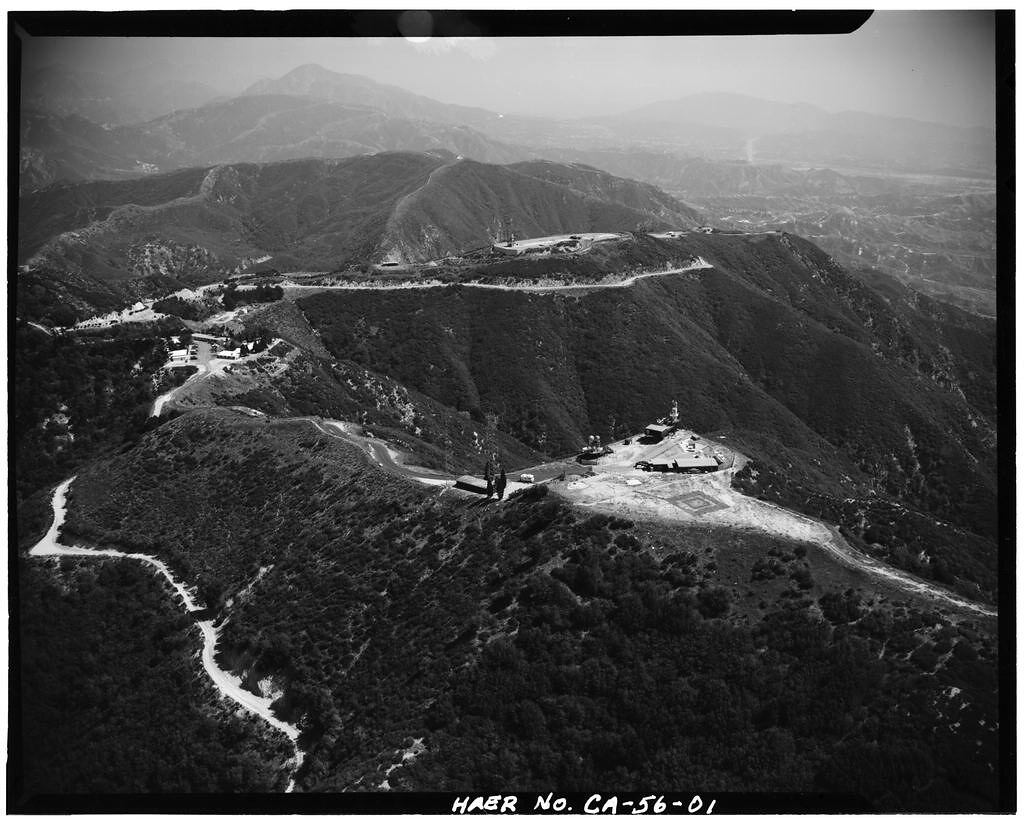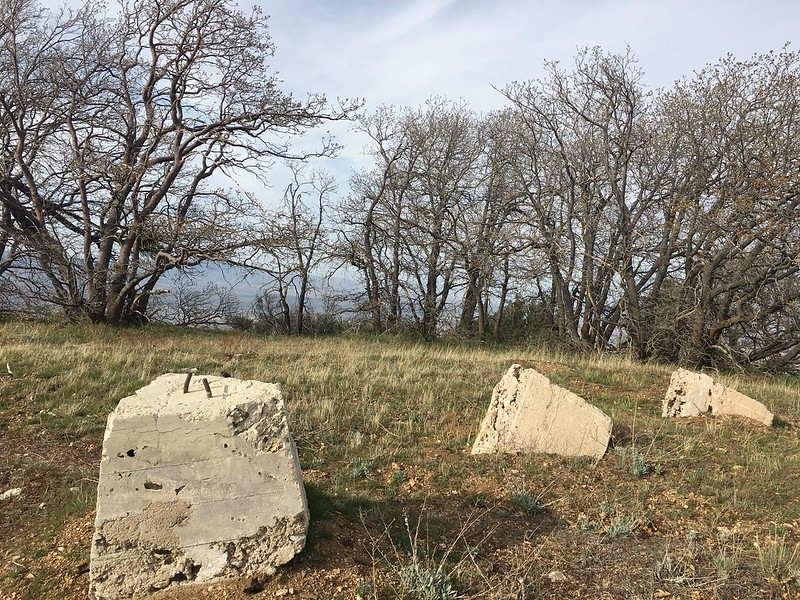Josephine Peak Lookout
Agency: Angeles National Forest
Dates: 1935-1975
Tower: NOTT10’ – Non-battered, open timber tower, 10 feet high
Cab: C3- USFS Region 5 1934 standard 14′ X 14′ wood cab (BC-301 series)
Status: Demolished
Elevation: 5558 ft
Topo Map: USGS Condor Peak
Coordinates: 34.1601, -117.7997
Trail reports: Hundred Peaks Guide, Modern Hiker
Josephine Peak at 5558 ft offers impressive vistas from the front range including views of Strawberry Peak, the interior of the San Gabriels, the Big Tujunga watershed and into the L.A. basin.

From 1936 to 1975 a fire lookout tower stood on the summit until it was destroyed by the Big Tujunga Fire (Mill Fire). Today, only the concrete footings of the lookout tower remain next to a small shed with communications masts on the roof. The California Division of Transportation installed a summit benchmark on a slab of concrete a few years after the fire.
Lookout
In 1936, the Mount Lukens lookout tower was moved to Josephine Peak. The tower had stood on Mount Lukens since 1923 but urban smog disrupted visibility for fire detection. Josephine Peak was chosen as the new lookout site for its commanding views to cover the upper Big Tujunga, upper Arroyo Seco, and Mill Creek drainages.
 Josephine Peak Lookout in 1938. Courtesy of the U.S. Forest Service
Josephine Peak Lookout in 1938. Courtesy of the U.S. Forest Service
The first lookout staff to live in the glass encased tower were Byrd K. Walsh and family. Other lookouts included Vaughn Turner in 1939, Gladys Gale by 1956 and Peggy Hotchkiss in 1960. In Peggy’s first year, a military plane crashed into the mountain, less than 1000 feet from the tower…
 The lookout in 1962. Courtesy of John Patten
The lookout in 1962. Courtesy of John Patten
Casada Canyon
On September 22 1960, US Marine Corp Captain Howard O. Casada Jr was killed when his jet fighter plane (F-104 Starfighter), armed with a rocket missile, crashed into the southern face of Josephine peak. The crash was preceded by a huge sonic boom heard and felt throughout Los Angeles. A fire broke out after the explosion, burning about 20 acres. Witnesses saw a white streak and felt the sonic boom shake buildings and windows. Casada was 29 at the time and left behind a wife, infant son and father. The crash took place close to an unnamed canyon, which Christopher Brennan and Matt Maxon, local canyoneers, successfully advocated to be named after Captain Casada.
 Casada’s F-104 Starfighter. Credit: US Navy
Casada’s F-104 Starfighter. Credit: US Navy
Smog Kills Lookout Operations
By 1972, Los Angeles become enshrouded in a thick layer of smog due to pollution from automobiles as well as factories and refineries. Therefore, the excessive smog reduced visibility greatly, so the forestry decided to staff Josephine Peak only during periods of extreme fire danger. Staff normally man the lookout towers from May to October. Barney Donaldson, was one of the last lookout attendants.
 A smog enshrouded downtown LA in 1968. Credit: LA Public Library
A smog enshrouded downtown LA in 1968. Credit: LA Public Library
To the End…
The Mill Fire of Big Tujunga in 1975 burned 47,000 acres and was the second largest forest fire to hit the Angeles National Forest. Hot Santa Ana winds fanned the fire with gusts up to 60 mph. In the end, the fire razed 43 buildings including the forest lookouts on Josephine Peak and Mendenhall Peak.
Thus, if you make the trek up to Josephine peak, sit and enjoy the expansive vistas amongst the concrete footings that remain of a time when lookout towers dotted the peaks.



 A young Bob Cates (Sierra Club-Angeles Chapter Historian) on summit of Josephine Peak, March 3, 1972. Credit: Bob Cates Collection, Sierra Club-Angeles Chapter Archives
A young Bob Cates (Sierra Club-Angeles Chapter Historian) on summit of Josephine Peak, March 3, 1972. Credit: Bob Cates Collection, Sierra Club-Angeles Chapter Archives


